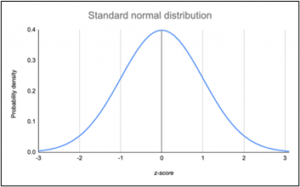We all understand the concept of an iceberg that has three-quarters of its mass submerged under the waterline. Well, this same concept can be applied to value analysis since it too represents three-quarters of the savings available to your healthcare organization under the waterline. These unwanted and unneeded costs are represented by five categories of supply chain savings as follows:
Value Analysis Savings Below the Waterline
1. Non-Conforming (Over-Specified or Underspecified) Products, Services, and Technologies: A 100-bed hospital standardized on a stapler gun with a unique feature (articulating arm) for abdominal surgery that a value analysis team confirmed wasn’t needed for all surgeries. This hospital saved $32,000 (26%) annually when the practice was changed to only using this specialized stapler gun when it was medically required, not for every abdominal surgical case.
2. Feature-Rich Products, Services, and Technologies: Your customers don’t need everything (i.e., aesthetic functions – nice to have, but not medically required) they are requesting for their products, services, and technologies. For example, standardizing your pacemaker features for all your cardiac patients instead of customizing (planning ahead on what customers actually require) their features. Customizing can save, on average, 48% on your most common pacemakers. This concept is best visualized with a standard normal distribution graph (figure 1) which shows that the normal distribution pattern of your pacemaker purchases should slope on both sides of the scale as opposed to following a straight line if your pacemaker features are customized vs. standardized.
Figure 1: Standard Normal Distribution
3. Wasteful and Inefficient Methods and Practices: Every healthcare organization has embedded methods and practices that are wasteful or inefficient because things change and people change in any given year. For instance, a 500-bed university teaching hospital we worked with was spending $382,000 more in IV sets annually because every time one of their 37-year-old IV pumps alarmed the nurses change the IV set, when the real problem was that the hospital needed to buy new pumps.
4. Value Mismatches (Lower Cost Alternatives Available): The true essence of value analysis (Cost/Function = Best Value) is to determine the most appropriate products, services, or technologies for their intended purpose. Why use a silver catheter costing $9.98 when an off-the-shelf $1.00 catheter will suffice? Why buy patient slippers at a cost of $3.66 when a $1.29 pair meets your customers’ requirements exactly, or use a silver catheter when an off-the-shelf catheter will suffice?
5. Utilization Misalignments (Wasteful Consumption, Misuse, and Misapplication of Products, Services, and Technologies): There can be many reasons why your healthcare organization has utilization misalignments. The most common reason is that your hospital, system, or IDN is not embracing the use of key performance indicators to track, trend, and then compare your healthcare organization’s practices with your peer cohort. Like a 150-bed community hospital that saved $52,000 annually by discovering that the community standard was to draw the exact amount of contrast media needed for the patient CT/MRI with the injection syringe and only use prefilled syringes later in the day. This eliminated waste because larger containers opened later in the day could expire.
Envision every category of supply and purchased services having their own key performance indicators so that you will know where you stand on every one. This way you can focus your attention on the areas that need attention and maintain/sustain the areas where you are a best practice.
Use VA to Achieve Savings Beyond Price
As we have described above, savings beyond price is an art and science that is best employed by using the technique of value analysis to study how your products, services, and technologies are employed once they are in the hands of your customers. This way you can attack your cost drivers below the waterline where your biggest cost savings reside.
| About Robert T. Yokl, Founder & Chief Value Strategist for SVAH Solutions |
|---|
| Robert T. Yokl is President and Chief Value Strategist at SVAH Solutions. He has four decades of experience as a healthcare supply chain manager and consultant, and also is the co-creator of the Clinitrack Value Analysis Software and Utilizer Clinical Utilization Management Dashboard that moves beyond price for even deeper and broader clinical supply utilization savings. Yokl is a member of Bellwether League’s Bellwether Class of 2018. https://www.SVAH-Solutions.com https://www.SavingsValidator.com |
Articles you may like:
Why KPIs Can Help You Optimize Your Value Analysis Team’s Performance Almost Overnight






